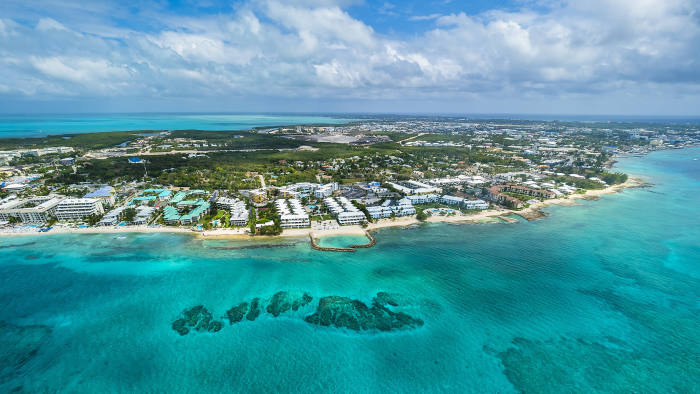This month I would like to explore the ways in which investors could benefit from investing in the most sought-after piece of real estate in the Cayman Islands and the hurdles that they may face in the process.
What I think about Seven Mile Beach Developments
In my opinion, one of the most significant motivating factors behind the high cost of land along Seven Mile Beach is that there is so little land available on which to build. At the moment there are two developments taking place, Seacrest (20 units) which is just north of Treasure Island and already sold-out, and Aqua (10 units) which is between George Town Villas and Grandview, and 50% sold-out. Both properties are ten-storey apartments. Vacant lots are also drying up quickly and these types of parcels where there is only one party as the seller, are much more straight forward transactions for developers.
Investors are therefore only really faced with one option and that is to look at the location from a redevelopment perspective. If that is the case, they will be seeking a well-located existing site with preferably three storeys, located beachside, with all units beachfront.
In order for a developer to purchase an entire condominium complex they must obviously get the permission of the owners. Recently enacted Strata legislation means that not all owners need to agree to sell and a majority of Strata owners is required in order to vote to sell the property. For the specifics on this, I contacted Maples and Calder’s Head of Property and Construction, George Loutas.
Mr Loutas explained:
“The legislation was brought into being in 2012 as the Strata Titles (amendment) Law and was then incorporated into the Strata Titles Law (2013). A ‘supermajority’ resolution of the proprietors of a strata corporation can vote to sell/demolish/redevelop a strata development.” The law determines the ‘supermajority’ on factors such as the zone in which the development is situated and the minimum percentage of votes cast at the meeting, as well as their weight in relation to the size of all unit entitlements for that development. By way of illustration, in a Beach Resort/Residential zone, the minimum percentage of votes is 75% of votes cast at the meeting; which votes cannot be less than 75% of the unit entitlements for all strata lots included in the strata. In other zones, the percentages vary.”

At the moment, this new law has yet to be tested, and as such there is no precedent set
“However, we are aware that the law was close to being tested in relation to one development, but in the end, the developer purchased all the apartments in that development. We also understand that there was a derelict development where the owners unanimously voted to demolish the apartments,” Mr Loutas advised.
The question then comes into play as to who is responsible for paying legal fees, should an owner in a Strata not want to sell, even after a majority decision to sell takes place, and want to contest the vote to sell. The question arises if this would be an internal conflict for the Strata, as to who pays the fees.
Mr Loutas stated that the law was not clear in that regard and could be the subject of dispute.
There is also the concern that should a Strata be dissolved and each owner get paid their entitlement, those with better, beachfront view apartments might consider that their entitlement ought to be greater than those owners with not so idyllic views. At the moment, Cayman’s laws do not differentiate between apartments as far as their location within the property is concerned, whereas in places such as Australia they make provisions for owners who have the better view.
Mr Loutas explained: “In Australia, the unit entitlement of strata apartments is not only based on factors such as square footage but on the value of the apartment too. By way of illustration, an apartment of, say, 3,000 square feet overlooking the beach would have a higher unit entitlement (and, of course, valuation) than a 3,000 square foot apartment in the same development overlooking a rear car park. It makes sense that the beachfront apartment has a higher value and corresponding higher unit entitlement; which would translate into higher strata fees for its owner than the owner of the apartment overlooking the rear car park in the same development.”
People looking at investing in Seven Mile Beach from a development perspective should be aware that they need to put in place a long-term investment plan because there are various hurdles to go through before returns can be made. It also needs to be born in mind that, due to the market absorption rate of about 15 to 20 units a year, of high-end units (over US$3mill+) the only way to realise sufficient returns on investment is to aim for high-end Seven Mile Beach developments which price tags in the three, four and above million dollars. These developments can be long and protracted in the making, but the rewards are exciting at completion.
I would love to hear from you if there are any points of interest as they relate to Seven Mile Beach’s real estate industry that you would like me to discuss in future articles, or if there are any questions you would like me to answer. Email: James.Bovell@bovell.ky
